5. Il Postino (1994)
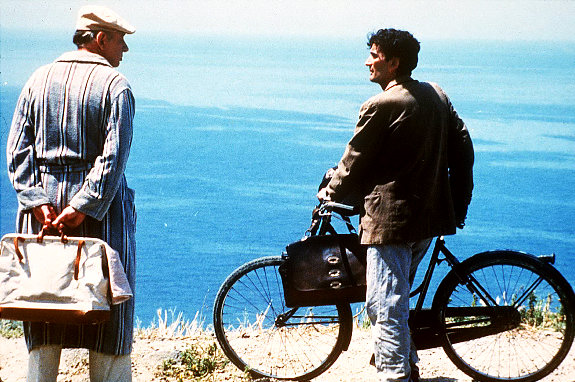
Michael Radford’s Il Postino may seem like an odd choice for this list, as on the surface it seems like a simple, straightforward story of love in the midst of a repressive and militaristic government. However, underlying the romantic plot there exists a sort of multidimensionality that serves the philosophical elements of the film and lifts it from its standard narrative formality.
The film concerns the life of Chilean poet, Pablo Neruda and the postman he befriends on the island upon which he is exiled. The eponymous postman functions as a sort of mirror for Neruda, a way of reflecting his perception of himself through the lens of another’s experiences.
The postman, Mario, strikes up a friendship with Neruda and they bond over poetry, with Neruda advising Mario on his love poetry (which he uses to woo his lover, Beatrice). Mario relates to Neruda that although he is a postman, he seeks to express himself through poetic language and is better equipped to express himself through written word than through speech. Mario understands that language is part of us and must be expressed rather than kept inside, which relates to what Wittgenstein espoused in the Tractatus:
“Language is a part of our organism and no less complicated than it.”
Mario understands that language can only be understood through the experience of the connection between objects and individuals. Though he may not be a skilled speaker, he appreciates the meaning that can be found in poetic language, through music and sound. Wittgenstein himself was a proponent of music as a means of expressing logical grammar outside of human speech or the written word. He wrote:
“But I don’t mean that understanding a musical theme is more like the picture which one tends to make oneself of understanding a sentence; but rather that this picture is wrong, and that understanding a sentence is much more like what really happens when we understand a tune than at first sight appears”
Wittgenstein relates that language is as intuitive as the meaning we pick up when listening to a piece of music or a sound. Perhaps, he says, it is that there is an interplay of meaning between the logic of musical notation, rhythm, timbre and the structure of spoken language. It is perhaps fitting that the last gift Mario leaves for Neruda in the film is not a poem, but a recording of the sounds of island.
4. Youth Without Youth (2007)
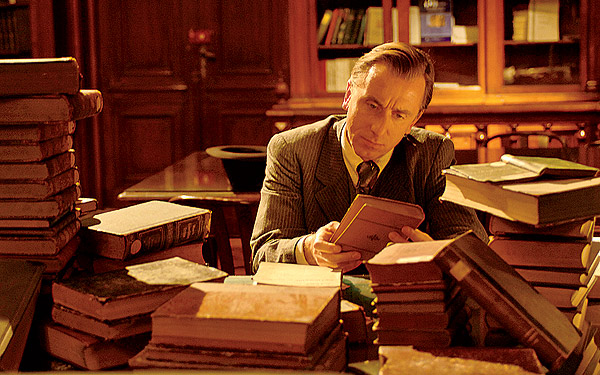
Francis Ford Coppola has called Youth Without Youth “a meditation on time and consciousness” and “a changing tapestry of illusion”. It deals with the life of Dominic Mattei (played by Tim Roth), a linguistics professor who has attempted throughout his academic life to discover the source of human language. He finds one morning that he has regenerated into his younger self and becomes fluent in multiple languages.
The similarities between Mattei and Wittgenstein are evident, however the film itself can be seen as a dialogue between the ideas of Wittgenstein and Coppola answering or perhaps replicating the ideas of Wittgenstein in much the same way Maya Deren did decades earlier.
Again, the film deals with the nature of language as a human construct that originates from the void of the universe. Like Wittgenstein, Mattei first attempts to source the origin of language or perhaps explain the nuances of linguistic structure, but ends up understanding that language itself is part of a larger structure of universal logic.
Coppola seems to understand the relation between time and the structure of language, by tying the two together he, like Wittgenstein synthesizes and formulate a structural framework that speaks to experience of an individual as the constant within the nature of language’s effect on the universal experience of humanity. He wrote in his later work, the Blue Book:
“How is it possible that one should measure time? For the past cannot be measured, as it is gone by; and the future can’t be measured because it has not yet come. And the present can’t be measured for it has no extension.”
By integrating all aspects of time, past, present and future into the singular experience of Dr. Mattei, Coppola attempts to cinematically realize this idea that time can only be measured by its interpolative relations between objects and individuals.
3. Zorns Lemma (1970)
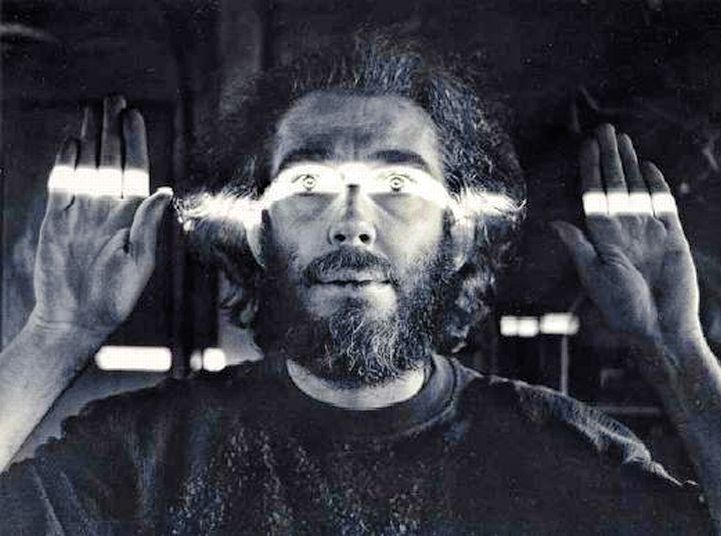
Zorns Lemma by Hollis Frampton is an outright thesis in its own right, but rather than delivered through the written word, Frampton sought to make his claims in film, which is perhaps an underused medium by which to describe complete theses.
The film is entertaining, but its main use is as an explanation of the eponymous logical proof used in set theory that was developed by Max Zorn and Kazimierz Kuratowski.
The proposition states that a partially ordered set (a set where not every pair of elements in the set need to be related) containing upper bounds (a bound where an element of the variable K is greater than or equal to the variable of S) for every chain contains a maximal element (an element of the variable of S that is not smaller than any other element of S in any given chain). Basically, Zorn’s lemma can be used to prove theorems containing maximal elements in their chain.
Hollis Frampton uses this proposition and applies to to the latin alphabet, substituting variables in the proposition for the classical elements (air, wind, earth and fire). Using mathematical logic and applying it not only to images, but also sound, the spoken word and the written word is a significant structural synthesis of Wittgensteinian ideas of language, though and could even be considered a formal exposition of metaphysics.
In this synthesis, Frampton, like Wittgenstein attempted to create a structure by which one could interpolate aspects of human consciousness with the physical and logical constants that govern the overarching reality of the universe. Frampton spoke of the film as a meditation on the “illusion of space or substance”, which speaks to similar works by Wittgenstein wherein he described the structural framework of thought consisting of “space, thought and essence.”.
Frampton’s work in Zorns Lemma is perhaps the best structural reference point in cinema for the ideas of Wittgenstein as they apply to a stringently analytical perspective and should be studied by those with an interest not only in the philosophical forms of experience and logic (and how they interact with each other), but also those who seek to understand the greater interconnectedness of reality and individual concsiousness.
2. My Winnipeg (2007)
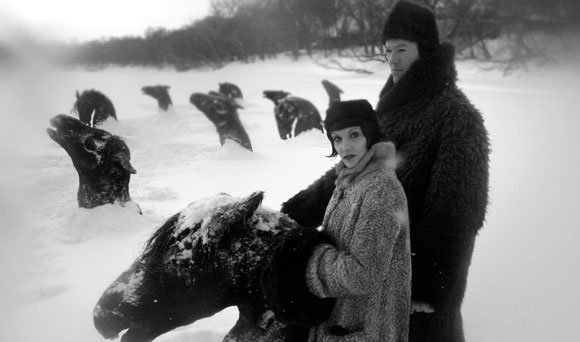
Guy Maddin’s My Winnipeg is again another personal meditation on the nature of memory, time, experience and how these facets of human life speak to each other in a way that unifies them all into a singularity of structure. Maddin stated that the film: “skates along an icy edge between dreams and lucidity, fact and fiction, cinema and psychotherapy”.
Maddin’s film is a metafictional autobiography, detailing his childhood and mythologizing his hometown of Winnipeg, Manitoba. Throughout the film, he inserts false facts and red herrings about the town that either are announced as false or treated as legitimate facts and further extrapolated upon.
In this way, Maddin uses the concepts of urban legends and myths in order to expand the “magical” nature of one’s childhood as well as to deconstruct the nature of memory and our tendency to over exaggerate our personal experiences. In forming this system and legitimizing the myths as part of his filmic world, Maddin expresses Wittgenstein’s assertion that our childhoods and beliefs form part of our understanding of reality:
“The child learns to believe a host of things. I.e. it learns to act according to these beliefs. Bit by bit there forms a system of what is believed, and in that system some things stand unshakeably fast and some are more or less liable to shift. What stands fast does so, not because it is intrinsically obvious or convincing; it is rather held fast by what lies around it.”
By convincingly conceiving a world-within-a-film Maddin is/was able to fool his audience into believing some of his lies about Winnipeg (that there are secret underground rivers, that there were horses frozen in the river, etc.). His construction and subsequent deconstruction of our model of his reality serves to inform us that our ideas are constantly in flux expressly due to our encounters with other conflicting ideas or ideas that confirm our long-standing beliefs.
1. Footlight Parade (1933)
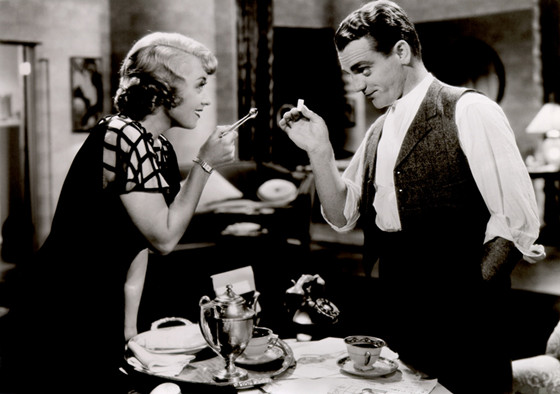
Busby Berkeley and Lloyd Bacon’s Footlight Parade is another odd choice for this list, however it exists as a sort of confirmation of Wittgenstein’s idea that propositions that are given to us by our external realities (societies, cultures, parents, etc.) can be encountered and confirmed by the structure of our perspective of reality that was generated by the societies we belong to.
The film was likely not directly influenced by Wittgenstein at all, but serves an immediate purpose as an example of a film that can be brought into the fold of Wittgenstein’s concept of entertainment as a means of comprehending the structure of human-language grammar. He wrote at the end of his life:
“People nowadays, think that scientists exist to instruct them, poets, musicians, etc. to give them pleasure. The idea that these have something to teach them-that does not occur to them.”
We see in Footlight Parade not only a schmaltzy musical, but a representation of American society at the time of the film’s inception. Written within the cheery musical score and the Berkeley choreography we encounter the boiled down consciousness of pre-War America.
Its celebration of exuberance, individualism and materialism speaks to the nascent idea of American imperialism of the time and harkens back to what Wittgenstein said about the creation of a systemic ideology by which a person learns to operate: “Bit by bit there forms a system of what is believed, and in that system some things stand unshakeably fast and some are more or less liable to shift”.
In this sense, we see the burgeoning sense of an “American Identity” beginning to form and the structure by which it was born. Wittgenstein was acutely aware of the influence of cultural symbolism upon an individual, he writes:
“A picture held us captive. And we could not get outside it, for it lay in our language and language seemed to repeat it to us inexorably.”
Footlight Parade exists as this sort of symbolism, oft repeated, so often in fact that perhaps the very origin of its imagery is lost in the film itself and the imagery it designed became repeated by other forms of cultural expression and were eventually subsumed into the cultural pathos themselves.
In this way, we understand that all of these things, written word, spoken word, plastic arts, cinema, portraiture, painting and music inform the way we realize our externality. Life and art, to Wittgenstein was a reverie, something that we become acutely aware of for less time than we are actually experiencing it.
Author Bio: Alan is a writer, musician and composer from Calgary, Canada. His short fiction has been previously published in L’Allure des Mots out of Miami FL. His music can be found on Spotify and iTunes.